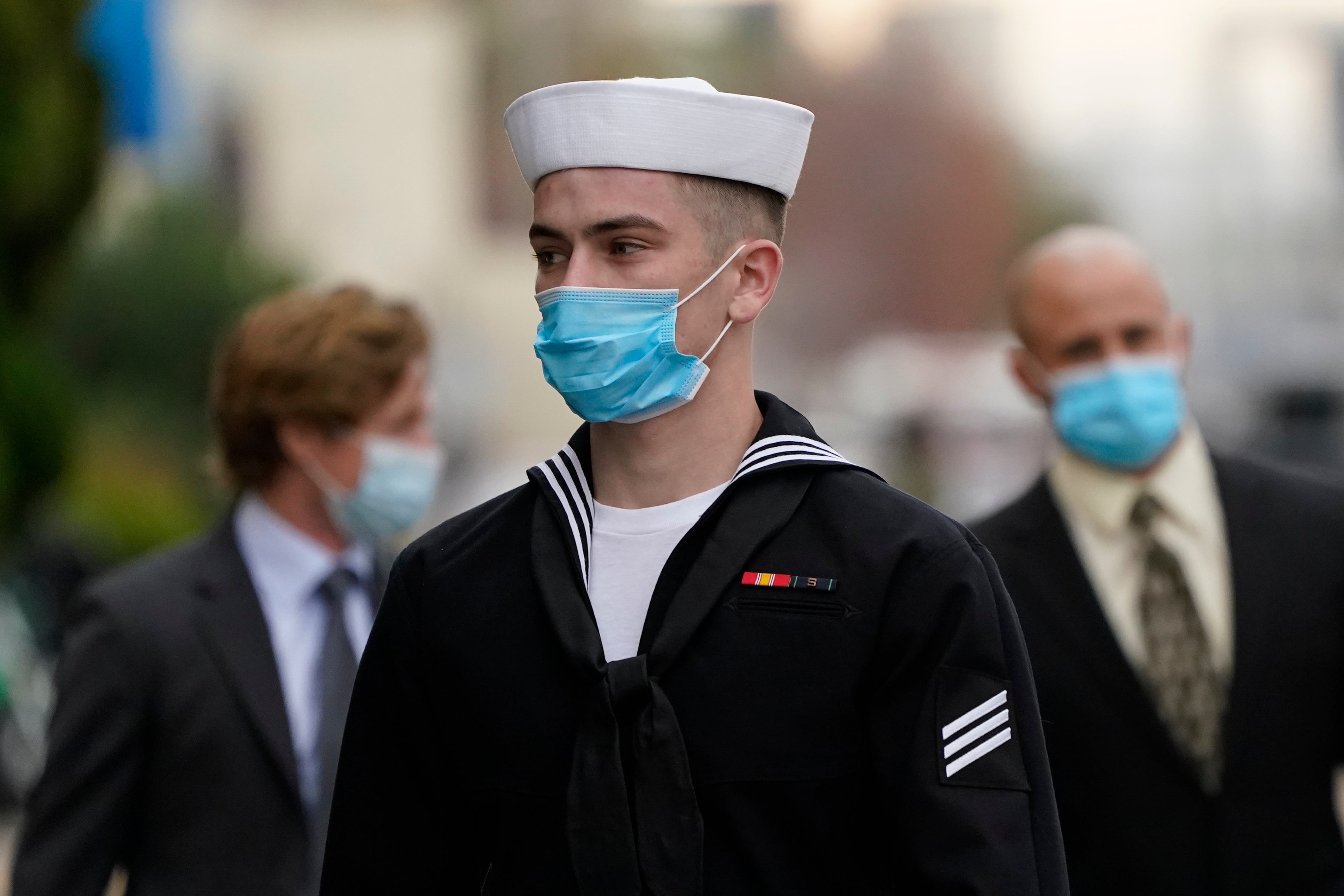Hearing held for sailor charged with burning US warship
A court hearing continues Tuesday in San Diego for a sailor accused of setting a fire that destroyed a U.S. warship last year

Navy prosecutors alleged that a sailor charged with setting the fire that destroyed the USS Bonhomme Richard last year was “disgruntled” after dropping out of Navy SEAL training, while his defense lawyers said there was no physical evidence connecting him to the blaze.
Prosecutor Cmdr. Richard Federico told the court Monday that text messages show Seaman Apprentice Ryan Sawyer Mays lied to family, friends and investigators about why he left SEAL training and that he was angry about being reassigned to the Bonhomme Richard. They also said he used foul language with a superior days before the blaze.
Mays denied igniting the amphibious assault ship that burned for nearly five days and injured dozens aboard.
Defense attorneys said fellow sailors considered Mays “arrogant” because he had come from SEAL training. They disputed that Mays hated the Navy more than any other sailor assigned to deck duty like he was, which involves cleaning the ship.
The junior sailor was charged with aggravated arson and the willful hazarding of a vessel.
The fire was the worst noncombat Navy warship blaze in recent memory.
The hearing will determine whether there is enough evidence to proceed with a military trial. Scheduled to testify Tuesday is a key witness for the government, a crew member who reported seeing Mays go down to the ship’s lower storage area where investigators say cardboard boxes were ignited.
About 160 sailors and officers were on board when the fire started on the 840-foot (256-meter) vessel, which had been docked at Naval Base San Diego while undergoing a two-year, $250 million upgrade.
More than 60 sailors and civilians were treated for minor injuries, heat exhaustion and smoke inhalation. Left with extensive structural, electrical and mechanical damage, the billion-dollar ship was scrapped.
Defense Attorney Gary Barthel pointed out no DNA linked to Mays was found at the scene and he questioned why investigators concluded Mays did it just because they found a lighter among his belongings.
“Were there other individuals on the ship with lighters?” Barthel asked the lead fire investigator for the Navy, who agreed there likely were.
Navy prosecutors argued the case was carefully investigated. They have collected more than 28,000 pages of material and hours of video to build their case.
Defense lawyers objected to the hearing, saying they were not given enough time to review the evidence against Mays.
Officials assessing the ship’s damage found three of four fire stations on the ship had evidence of tampering: Fire hoses had been disconnected and one was cut, according to court documents.
Investigators also found uncapped bottles containing small amounts of highly flammable liquid near the ignition site, including one that tested positive for a heavy petroleum distillate such as diesel, kerosene or jet fuel, according to the documents.
Mays told investigators he was in the hangar bay when he became aware of the fire, according to court documents. He described how he assisted firefighters, alerted at least one crew member of the threat and eventually helped fight the blaze, according to the documents.
Winds coming off San Diego Bay whipped up the flames that shot up the elevator shafts and exhaust stacks. Two explosions — one heard as far as 13 miles (21 kilometers) away — caused the fire to grow.
The fire sent acrid smoke wafting over San Diego for days.
Dozens of Navy officials, including several admirals, face disciplinary action for systematic failures that investigators said prevented the blaze from being put out sooner, according to investigators.